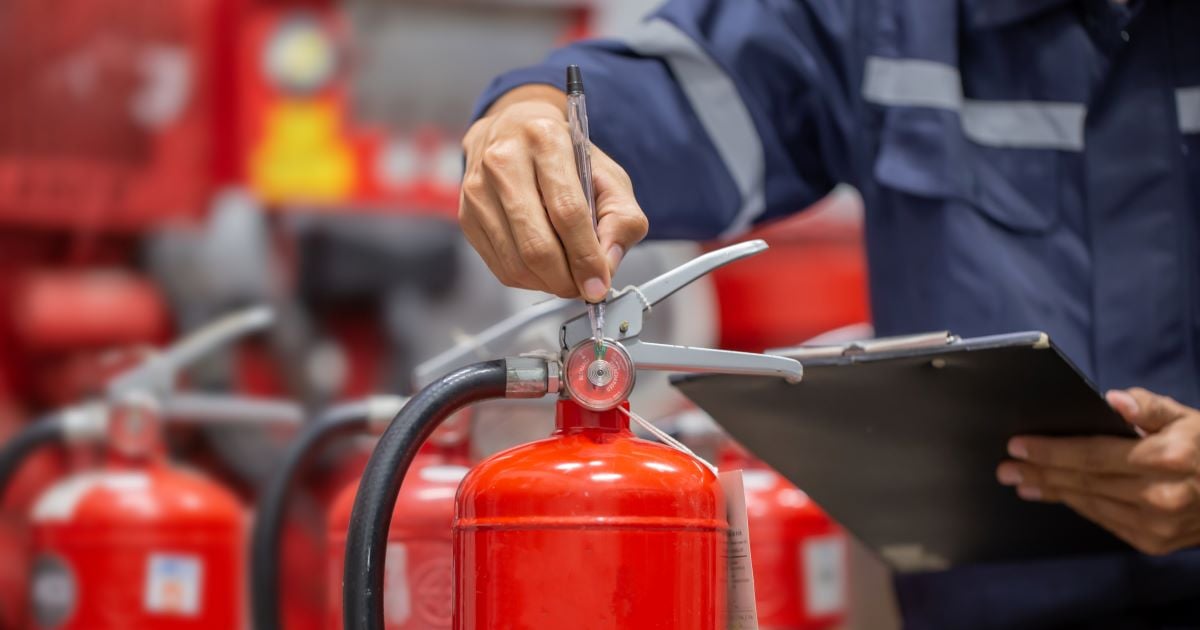It’s a must for any Sydney company. It’s not just legally required but also a method of keeping personnel, customers, and even property secured. The effects of a fire can be devastating loss of money in just a few minutes, but many of these risks could be mitigated or prevented by having the appropriate precautions implemented. Inspections for fires, as well as regular tests of electrical systems and the compliance with CFSP standards all help in creating a safe and secure environment.
Why Fire Inspections are the basis of Safety
Inspections for fires are the initial defence against the possibility of dangers. They verify that every part of a building’s protection system is in place and current. In Sydney the business must conduct inspections every six months or annually in accordance with the building’s type and local council regulations. The inspection can cover everything from sprinkler and fire alarm systems to smoke detectors, hydrants, and extinguishers.

What makes inspections crucial is their capacity to uncover unnoticed issues before they become risky. It might not seem like a huge issue however a minor issue with a fire hydrant or an alarm for smoke that’s blocked could be fatal in the event of a crisis. By carrying out regular fire inspections, business owners are not only meeting legal requirements, but making active efforts to safeguard their premises from the possibility of unforeseen disasters.
The hidden electrical risk can be eliminated by testing and tag
Electrical systems are a leading source of workplace fires. That’s why testing and labeling is an essential included in any fire safety plan. It involves checking electrical equipment for safety, to ensure they’re safe, compliant and functional. After that the tag is visible put on the device to show that it has passed the test. This is a legal requirement that’s often not a simple one. In many businesses, it’s a precaution against possible risks.
The old wiring, malfunctioning appliances or worn-out cables could easily cause fire in the event that they are not checked. Through conducting regular tests and tagging, businesses reduce the chance of electrical faults leading to a fire outbreak. The employees are also assured that the work environment is safe. This creates a sense of trust and confidence within the workplace. The combination of testing, tagging, and fire inspections makes an extensive safety program that minimizes risks on multiple fronts.
The role of CFSP in Compliance and Certification
In New South Wales only a Competent Fire Safety practitioner (CFSP) is able to certify or sign crucial documents for fire safety, such as the Annual Declarations on Fire Safety. The CFSP certification guarantees that only professionals with the appropriate qualifications can assess and verify the safety measures for fire. For business owners who have the CFSP, inspections and reports are not going to be just a routine report but an authentic evaluation conducted by professionals.
The role of a CFSP extends far beyond ticking boxes. They provide comprehensive reports and verify compliance with regulations. Companies without CFSP certification could be at risk of hefty fines, legal problems and even closing if their fire safety measures are deemed insufficient. The use of professionals who are accredited ensures that the fire safety system is maintained correct and that all requirements to be in compliance are met.
Fire Safety is a Constant Commitment
Safety in the event of fire is not just a one-time responsibility, but an ongoing responsibility for each business owner. Regular inspections and testing of electrical equipment, along with the proper certification of CFSP, create a safety cycle that doesn’t end. In addition to ensuring compliance with law the approach also fosters an environment of safety in the workplace. Employees can rest assured that evacuation plans have been developed Smoke detectors are operational as well as emergency lighting has been tested and the fire protection system is ready to use.
Treating fire safety as a continuous process rather than checking it off every year not only reduces risks but also strengthens the reputation of a company. Customers and clients are more confident when they are in a place which is highly rated for safety. In the long run, investing in early in fire prevention can save cost by preventing costly damages, fines, and legal battles.
Conclusion
Sydney fire safety needs a multilayered approach, which includes fire inspections and testing as well as tagging and certification through a CFSP. Each part is crucial in ensure that businesses are in compliance with the laws, and more importantly, ensuring that people and properties are protected. Safety is an integral component of business operations, not an afterthought. Companies can fulfill their legal obligations as well as create a more resilient and safer setting in the future, if safety is a fundamental part of their daily activities.